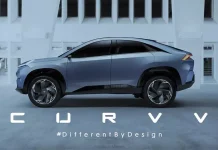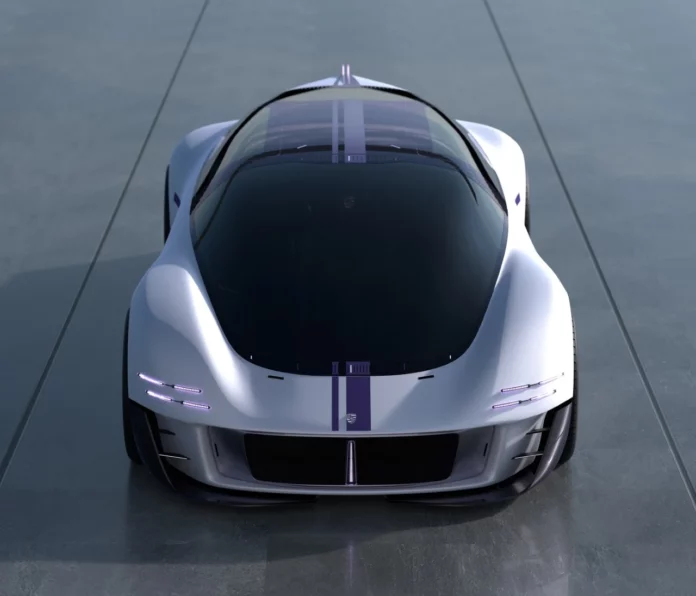Porsche Mission S Concept
The Porsche Mission S concept by Zhe Huang presents an intriguing blend of innovative design, aerodynamic efficiency, and the spirit of racing, while not being an official Porsche product. It’s fascinating how the design borrows from various elements of nature and existing high-performance vehicles to create something unique.




Aerodynamic Design
Here are some key aspects of this concept:
- Aerodynamic Efficiency: The teardrop shape, particularly the tapered tail, is a central feature of this design. This shape is known for its efficiency in reducing air resistance, which is crucial in high-speed vehicles. The ‘boattail’ rear not only adds a distinctive aesthetic but also serves a functional purpose in enhancing the car’s aerodynamics.
- Design Inspiration: The car draws design cues from various sources. The mention of the waterdrop from “Three-Body” suggests a blend of artistic and scientific inspiration, potentially reflecting the fluid dynamics principles that are integral to aerodynamic design. The Porsche 908 and Porsche Vision Gran Turismo seem to have influenced its overall aesthetics, combining classic and futuristic elements.
- Size and Proportions: Its dimensions make it a large vehicle, but it still retains the height of a Porsche 911. This creates an interesting juxtaposition: a vehicle with substantial length and width but a low profile, likely contributing to its dynamic performance.
- Interior Design: The cockpit arrangement and the seating posture are designed to emulate a supercar experience, which is an interesting choice for a vehicle that can accommodate five passengers. This design choice indicates a focus on providing a sporty, engaging driving experience while still maintaining practicality.
- Lighting Elements: The use of light strips both at the front and rear adds to the futuristic aspect of the car’s design. The centrally located edge-lit taillight is a particularly unique feature, enhancing the car’s modern feel.
- Two Variants: The differentiation between the White and Black versions offers an interesting choice for potential buyers. One variant focuses on comfort, while the other emphasizes performance, demonstrating the versatility of the concept.
- Electric Drivetrain: The adoption of an electric drivetrain is in line with current trends in the automotive industry. It suggests a focus on sustainability while also potentially taking advantage of the torque and acceleration characteristics of electric motors.
- Panoramic View: The expansive windshield and large windows suggest that the design prioritizes offering a panoramic and immersive driving experience, likely enhancing the enjoyment of the car’s performance capabilities.
- Conceptual Nature: As a fan-made concept, the Mission S represents a vision of what could be possible in automotive design. It combines elements of practicality, performance, and aesthetics in a unique package. It’s a testament to how concept designs can push the boundaries of current automotive trends and inspire future developments.



Futuristic Aesthetics
Key Analysis
The key analysis of the Porsche Mission S concept by Zhe Huang can be distilled into several crucial points:
- Aerodynamic Design: The teardrop shape, especially the tapered ‘boattail’ rear, is a standout feature, emphasizing aerodynamic efficiency. This design choice is not just aesthetic but also functional, aimed at reducing air drag, which is vital for high-speed performance.
- Inspiration and Legacy: Huang’s design draws inspiration from various sources, including the fluid dynamics of a waterdrop and iconic Porsche models. This mix of natural elements and automotive heritage creates a unique and forward-thinking design.
- Dimensions and Proportions: The vehicle’s size – long and wide but with a low profile – is an interesting aspect. It suggests a blend of spaciousness and sporty, aerodynamic design, unusual for a vehicle that can seat five passengers.
- Interior Layout: The car’s interior, with a supercar-like seating posture and a 1+2+2 seating format, is designed to offer a racing experience while accommodating multiple passengers, striking a balance between performance feel and practicality.
- Lighting Design: The innovative use of light strips and the unique central taillight add to the futuristic aesthetic of the car. Lighting is used not just for visibility but as a significant design element.
- Variants for Different Users: Offering two versions – the comfort-oriented White and the performance-focused Black – indicates an understanding of diverse consumer preferences, catering to both comfort and performance enthusiasts.
- Electric Drivetrain: The concept’s alignment with the trend towards electric vehicles (EVs) is notable. It suggests a commitment to sustainability and the advantages of EVs, like immediate torque and acceleration.
- Panoramic Visibility: The extensive windshield and large windows point towards a design priority on visibility and experience, enhancing driver and passenger engagement with the environment.
- Conceptual Significance: As a concept, the Mission S is an imaginative exploration of future possibilities in car design. It blends performance, efficiency, and aesthetics, demonstrating how conceptual designs can inspire and influence the trajectory of automotive innovation.
Electric Drivetrain
The Porsche Mission S concept showcases a visionary approach to automotive design, combining advanced aerodynamics, futuristic aesthetics, and electric mobility. It reflects a thoughtful consideration of the evolving demands and expectations in the world of high-performance vehicles.
The Porsche Mission S concept by Zhe Huang, while a conceptual design and not an actual product, presents several theoretical pros and cons:
Pros:
- Innovative Aerodynamic Design: The teardrop and boattail shape is optimized for aerodynamic efficiency, potentially enhancing speed and reducing fuel consumption (or battery use in the case of an electric vehicle).
- Futuristic Aesthetics: The unique design, with its emphasis on sleek lines and modern lighting, makes it visually striking and could appeal to those looking for a car with a distinctive appearance.
- Electric Drivetrain: If it’s electric, as suggested, it aligns with the growing demand for environmentally friendly vehicles, offering a sustainable alternative with the potential for high performance.
- Spacious Interior: Despite its sporty design, the car’s size allows for a more spacious interior than traditional sports cars, making it more practical for everyday use or for those requiring more passenger space.
- Versatility in Models: Offering two versions – one focused on comfort and the other on performance – caters to a broader range of preferences and uses.
- Enhanced Driving Experience: The panoramic view and supercar-like seating position are designed to offer an immersive and engaging driving experience.
Cons:
- Practicality Concerns: The large size and unique design might pose practical challenges in terms of parking, manoeuvrability in urban settings, and overall day-to-day convenience.
- Potential Cost: While not specified, the advanced design and features of such a concept vehicle would likely translate into a high price tag, limiting its accessibility.
- Conceptual Nature: As a concept, it’s uncertain how well the design and features would translate into a production vehicle. Some elements might be less feasible or efficient in real-world conditions.
- Limited Market: The car’s unique design and focus on combining sportiness with practicality might not appeal to all consumers, particularly those looking for more conventional vehicle designs or specific performance attributes.
- Uncertain Performance Metrics: Without real-world testing and data, it’s hard to gauge the actual performance, efficiency, and safety of the design.
- Maintenance and Repair: For such a unique and advanced vehicle, maintenance and repair could be more complex and costly compared to more standard vehicles.
Spacious Interior with Dual Variants and Porsche Legacy Influence
The Porsche Mission S concept proposes an exciting blend of design innovation, performance, and practicality, though its conceptual nature leaves many practical aspects uncertain. Its appeal would likely depend on individual preferences for style, performance, and the unique features it offers.
Conclusion
Overall, the Porsche Mission S by Zhe Huang embodies a bold step in envisioning the future of high-performance, aerodynamically efficient vehicles, balancing the thrill of racing with the practicalities of a passenger vehicle. Even as a concept, it provides valuable insights into where automotive design and technology might head in the future.





































